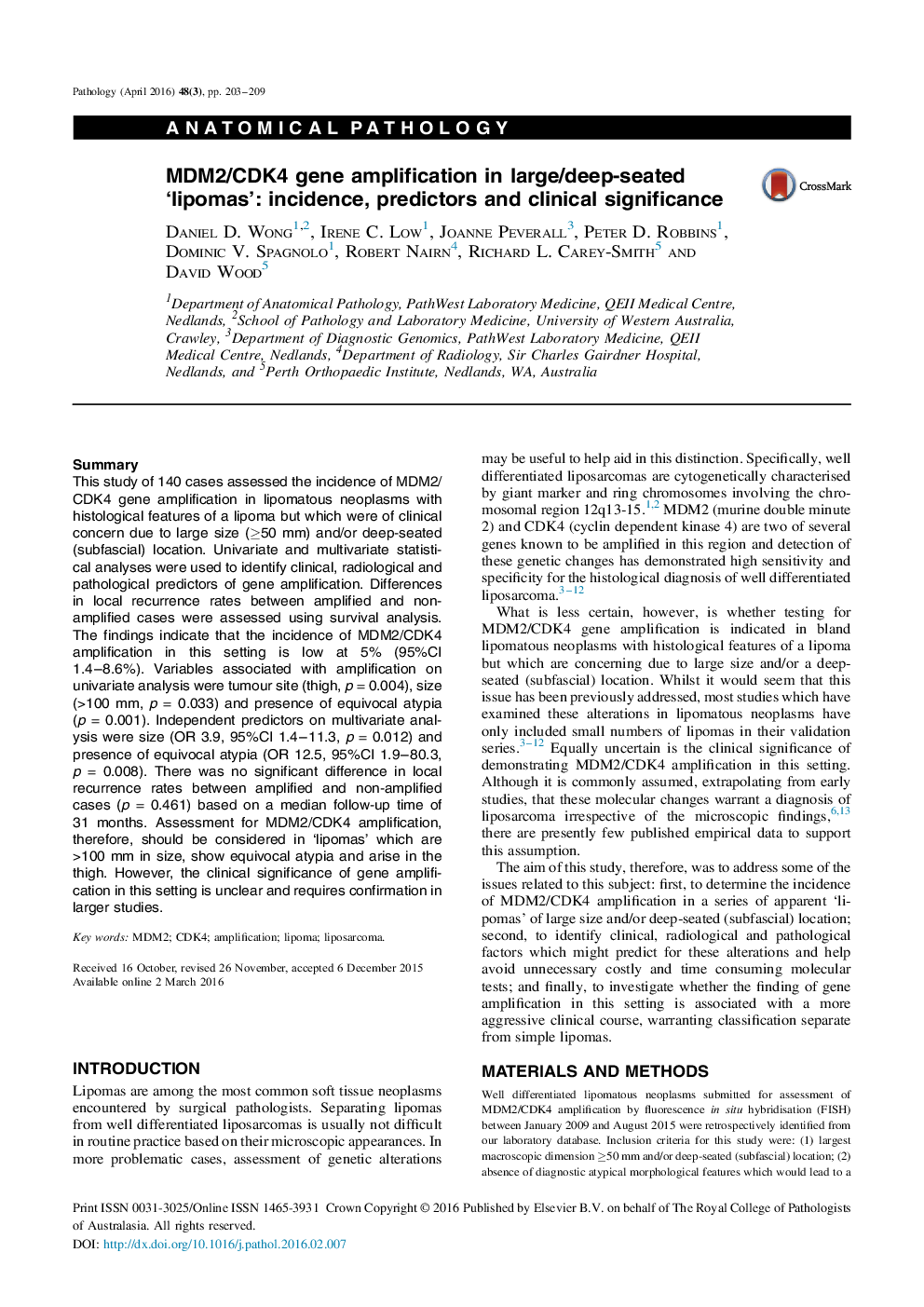| Article ID | Journal | Published Year | Pages | File Type |
|---|---|---|---|---|
| 104386 | Pathology | 2016 | 7 Pages |
SummaryThis study of 140 cases assessed the incidence of MDM2/CDK4 gene amplification in lipomatous neoplasms with histological features of a lipoma but which were of clinical concern due to large size (≥50 mm) and/or deep-seated (subfascial) location. Univariate and multivariate statistical analyses were used to identify clinical, radiological and pathological predictors of gene amplification. Differences in local recurrence rates between amplified and non-amplified cases were assessed using survival analysis. The findings indicate that the incidence of MDM2/CDK4 amplification in this setting is low at 5% (95%CI 1.4–8.6%). Variables associated with amplification on univariate analysis were tumour site (thigh, p = 0.004), size (>100 mm, p = 0.033) and presence of equivocal atypia (p = 0.001). Independent predictors on multivariate analysis were size (OR 3.9, 95%CI 1.4–11.3, p = 0.012) and presence of equivocal atypia (OR 12.5, 95%CI 1.9–80.3, p = 0.008). There was no significant difference in local recurrence rates between amplified and non-amplified cases (p = 0.461) based on a median follow-up time of 31 months. Assessment for MDM2/CDK4 amplification, therefore, should be considered in ‘lipomas’ which are >100 mm in size, show equivocal atypia and arise in the thigh. However, the clinical significance of gene amplification in this setting is unclear and requires confirmation in larger studies.
